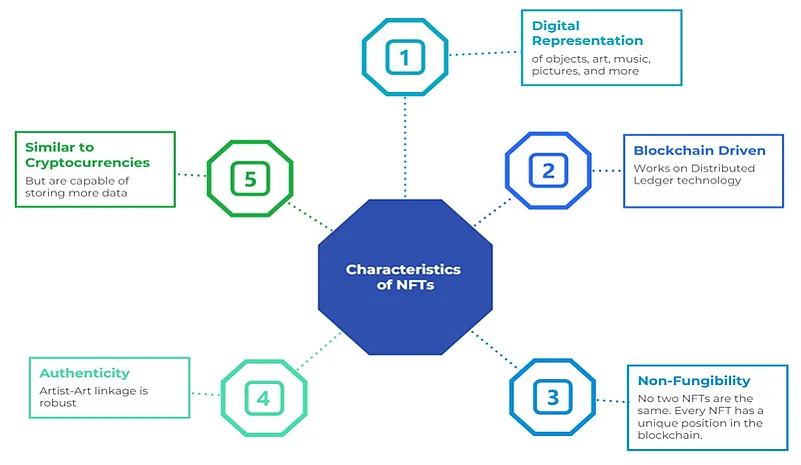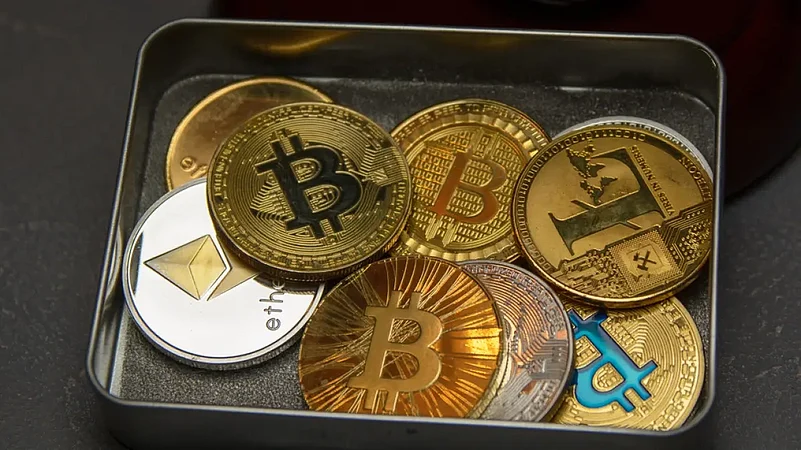The story of crypto assets in India has been intrinsically linked with disruption. While investors and institutions are beginning to get accustomed to the idea of cryptocurrencies, non-fungible tokens (NFTs) and their growth in popularity are another intriguing development happening in this space. NFTs initially started as a niche segment known only to crypto enthusiasts, but now they have become a globally trending commodity. This is underlined by transaction volumes of over $21 billion globally.
This trajectory is true in the case of India as well, with notable celebrities and institutions issuing their own line of NFTs, ensuring that they get attention from followers, investors, and analysts. The launch of NFT market places, which have on boarded over 300 artists, NFT-based brands, and the aforementioned celebrity NFT collections, have brought it closer to the mainstream discourse.
The imminent Cryptocurrency Bill has also brought aspects, such as the valuation of digital assets and investor protection to the forefront. This year’s Budget introduced a formal tax on gains from digital assets, and signs point towards the possibility of NFTs being included under this ambit. Considering the impending nature of this regulation, we will aim to unpack the rise of NFTs, its use cases, and the regulatory themes in this context.
Advertisement
Explainer (Image Below)

Figure: An overview of the core features of Non-Fungible Tokens (NFTs)
The Rise of NFTs
Supply and demand are factors at the core of business and currency, and the rising popularity of NFTs and broader crypto-tech communities have helped in bridging these existing gaps. NFTs have allowed for the rich cultural and artistic legacy of India to find a new way to reach investors, particularly first-time investors. Additionally, the lower cost of NFTs in India makes it lucrative for foreign investors to move towards transforming locally-produced art into digital assets. The seamlessness and transparency of smart contracts that govern these NFT transactions are added positives.
Another important aspect behind the increasing popularity of NFTs is the sense of exclusivity and community that they entail. Similar to country club memberships being highly desirable and exclusive commodities, owning certain NFTs helps one to build a community in the virtual world – a world in which we are increasingly spending more amount of time. Ownership of an exclusive NFT gives the investor access to other individuals and events of that community, as well as a stake in the direction of the overarching NFT project. In effect, they have the potential to act not just as a financial store of value; but also represent the value brought in by the overarching community.
Advertisement
Regulatory Issues
While the rise of digital asset markets have been remarkable, there is a need to take into account regulatory uncertainties that surround this sector, encompassing a lack of defined rules around crypto assets, authenticity and intellectual property, as well as factors around consumer protection.
At the outset, a lack of rules around crypto assets affects the legality, as well as the broader investor sentiment around supporting NFT creators. NFT transactions, as previously mentioned, are typically governed by smart contracts. In this context, any financial investment that requires the use of cryptocurrency may invite scrutiny on two counts – one, the lack of legality of cryptocurrencies as payment instruments, and two, the applicability of foreign exchange norms on cross-border transactions.
In the context of authenticity and intellectual property, it is important to highlight that smart contracts enabling the sale of NFTs do not always translate to a transfer of ownership or copyright, nor a permission to licence the artwork. These matters should ideally be explicitly addressed in the contract. Another important pain point is the replica market for NFTs. NFTs are essentially a uniquely signed token of a particular version of artwork. In the absence of digital forensics standards being adopted by marketplaces, replicas may also be uniquely coded, perpetuating copyright violations and fraudulent transactions.
These issues create an imperative for well-defined consumer protection regulations, based on marketplace transparency and accountability. A major step in this direction is verifying the authenticity and credibility of NFTs sold on a particular platform. Though NFTs may be perceived as authentic by virtue of being uniquely encoded in a ledger, there is a need for allowing only credible, and verified institutions to run NFT marketplaces. This would allow only registered artists and creators to sell, preventing unverified art from flooding the digital marketplace.
The Need For A Balanced Approach
Including NFTs under the broader ambit of crypto assets, or digital assets in the upcoming Bill will lend a greater degree of policy certainty to this market. However, considering the rapid pace of growth in this sector, it is important not to allow a prolonged regulatory vacuum to develop.
The unique nature of this market calls for a balanced approach, where NFT marketplaces could function efficiently, but under overarching guidelines issued by central regulatory authorities. Tradable digital certificates, validating the history of trade and the marketplace that enabled it, could allow for greater consumer confidence in buying and selling NFTs. Once marketplaces reach a stable trade volume, they could move towards classifying NFTs. While this is challenging considering the different forms and manifestations these assets can take, countries like Luxembourg have made a start by categorising NFTs into three distinct groups: financial instruments, electronic money, and collective investment instruments.
Government concerns over crypto assets fuelling money laundering and illicit financing also spill over into the discourse around regulating NFTs. The adoption of the Fifth Anti-Money Laundering Directive (5AMLD) by the European Union could prove to be a reference for such regulation. While it doesn’t explicitly discuss NFTs, the role of ‘art intermediaries’ in the context of money laundering and art financing is highlighted.
Further, focusing on investor protection and education is of immense significance while moving towards a balanced regulation. As an initial step, NFT platforms must focus on labelling content and informing users of an item’s history — its valuation, average volatility, biography of the artist, and a clear classification of the type of the digital content. Extension of the ASCI guidelines for cryptocurrency advertising to NFTs would also enable investors to make informed investments and contribute to a greater understanding of digital assets.
Advertisement

Conclusion
On the whole, while there has been exponential growth and adoption of NFTs, most of these transactions still function in a grey area. NFTs have the potential to revolutionise the market for digital art, making it more commercially viable and accessible. To make this a reality, regulations must balance the aims of accountability and growth, thus empowering creators and protecting investors.
Gautam Kathuria is program manager, and Abhishek V is research assistant at The Dialogue
(Disclaimer: Views expressed are the authors’ own, and Outlook Money does not necessarily subscribe to them. Outlook Money shall not be responsible for any damage caused to any person/organisation directly or indirectly.)















 Just one email a week
Just one email a week